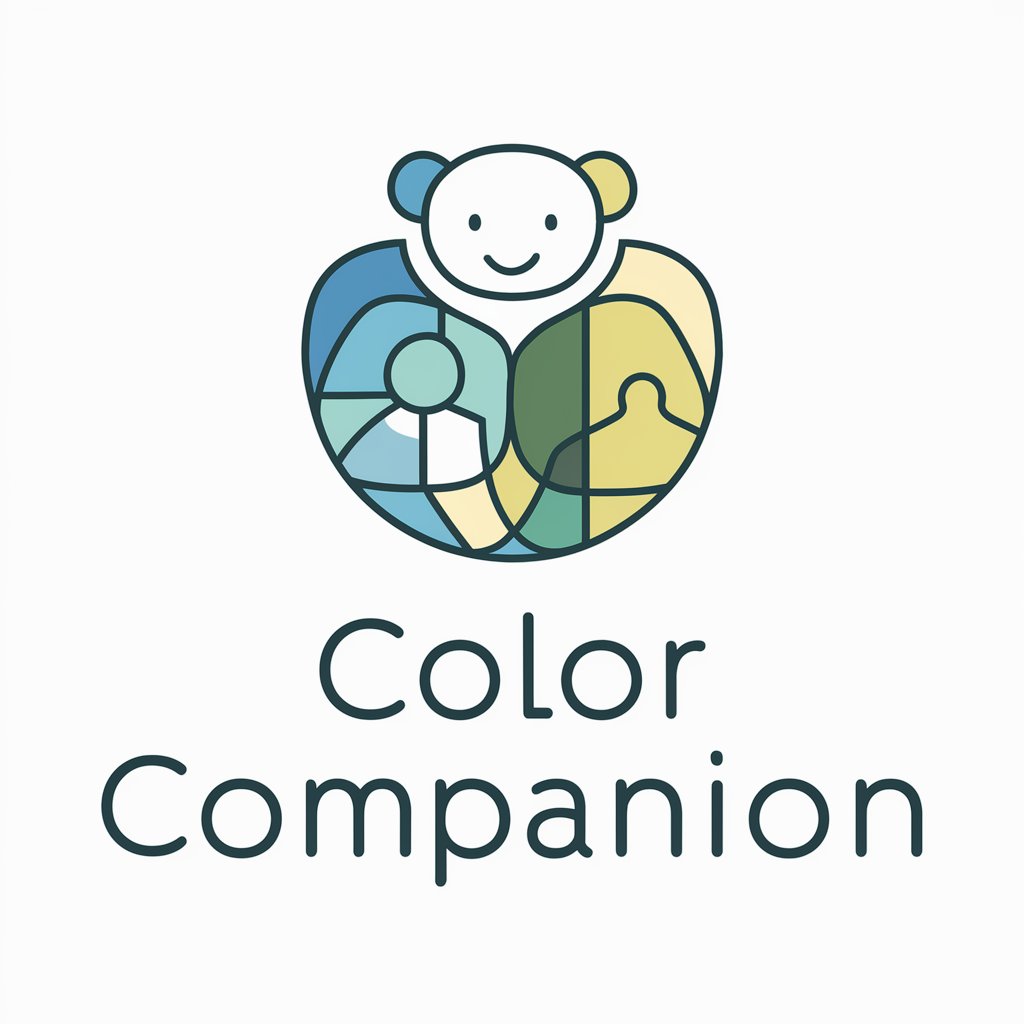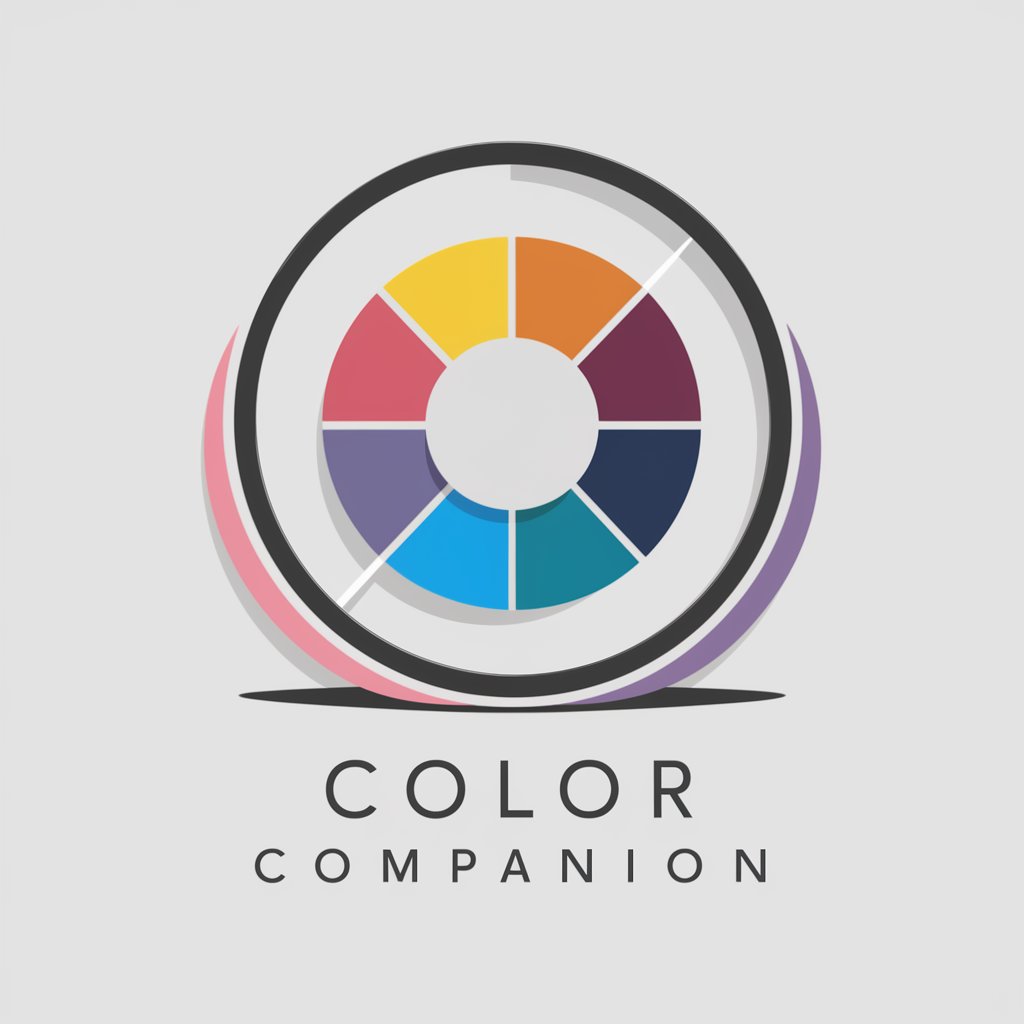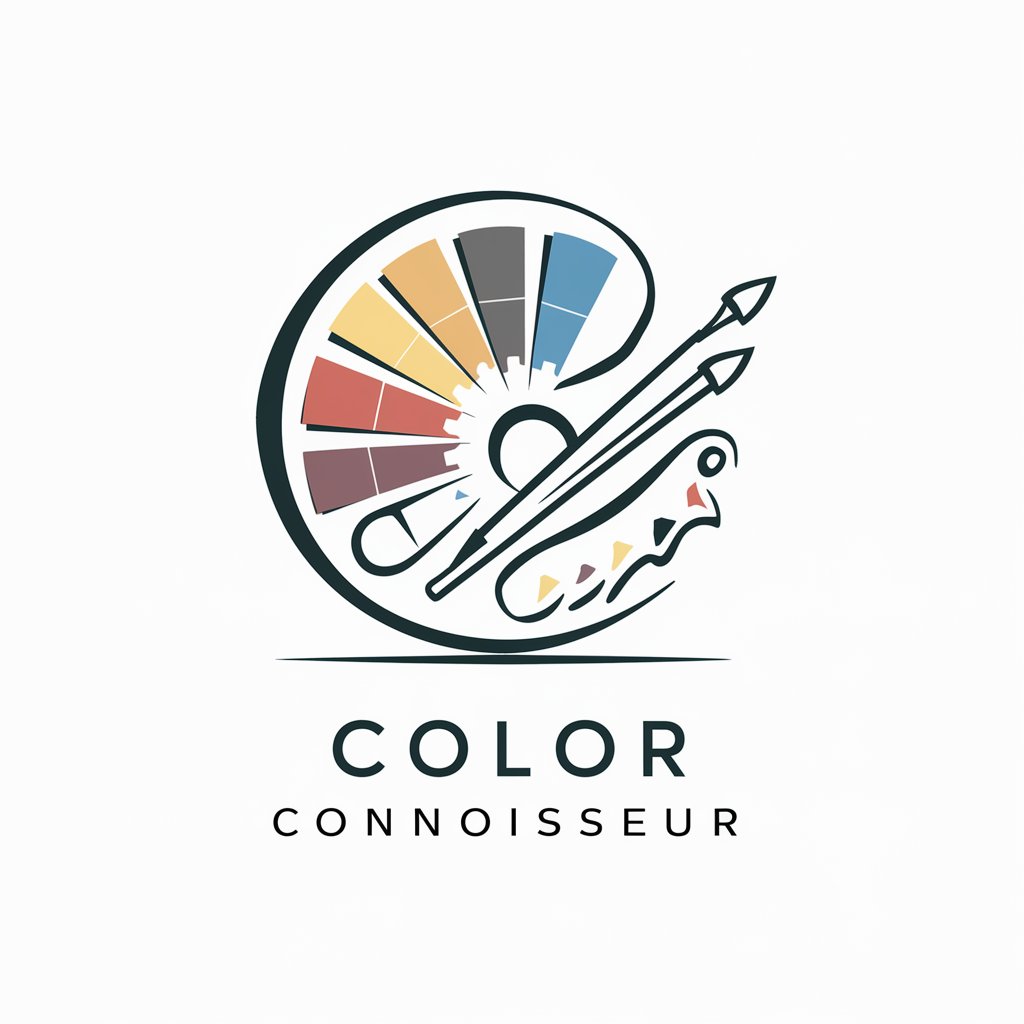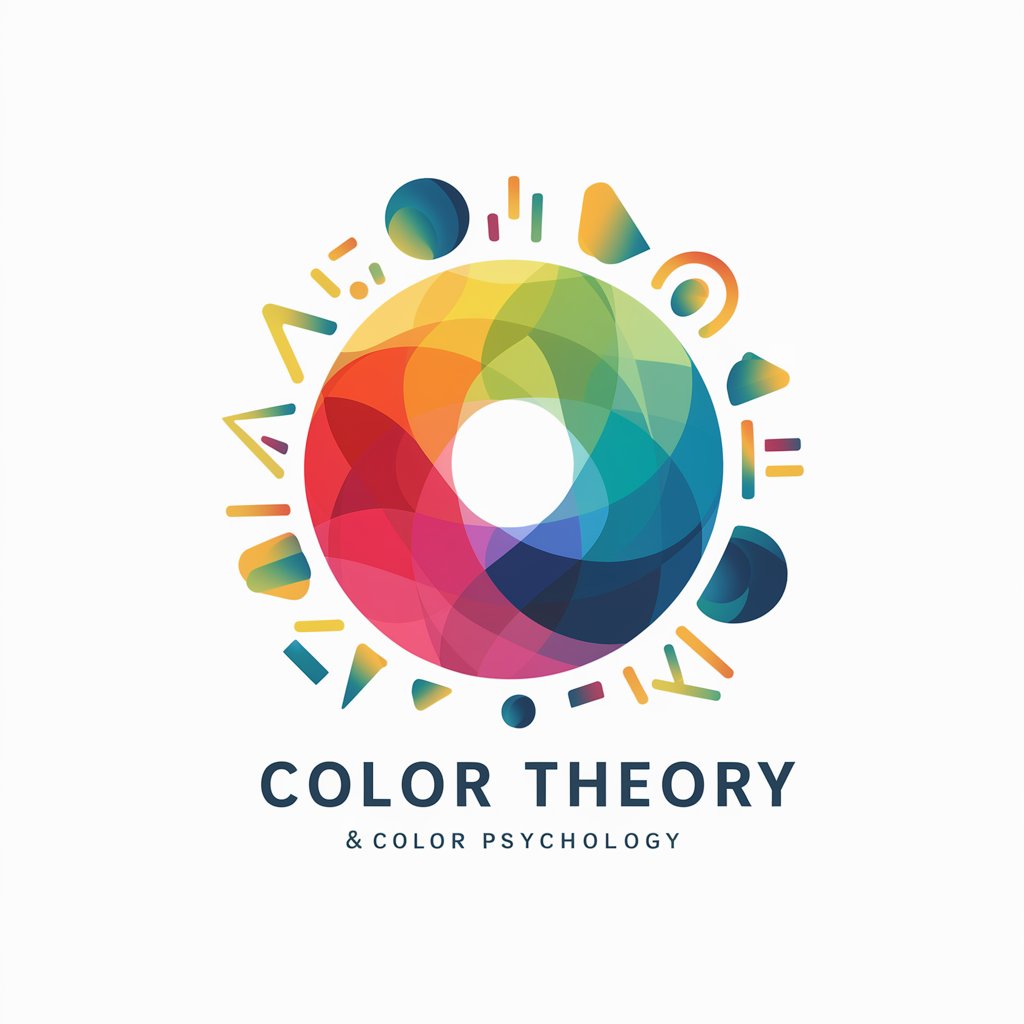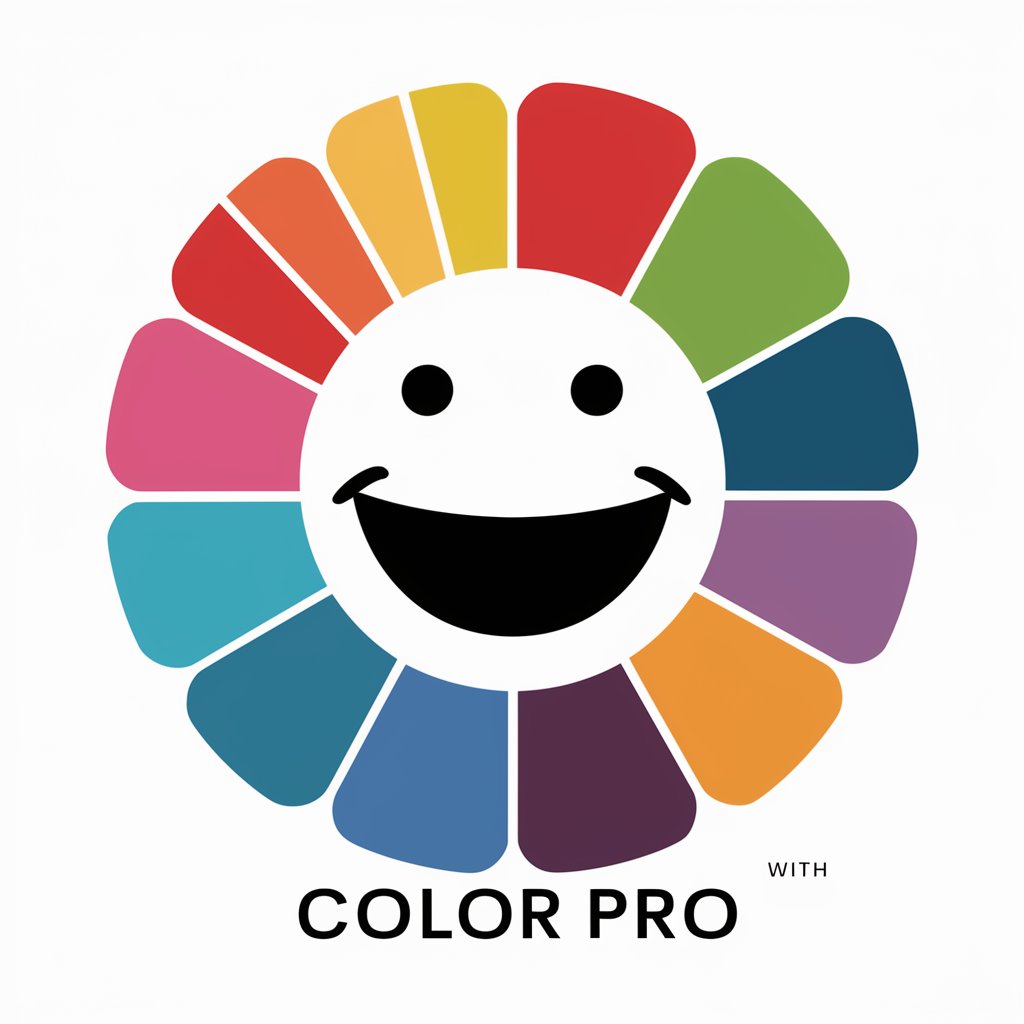
Color Theory Companion - Color Theory Guidance
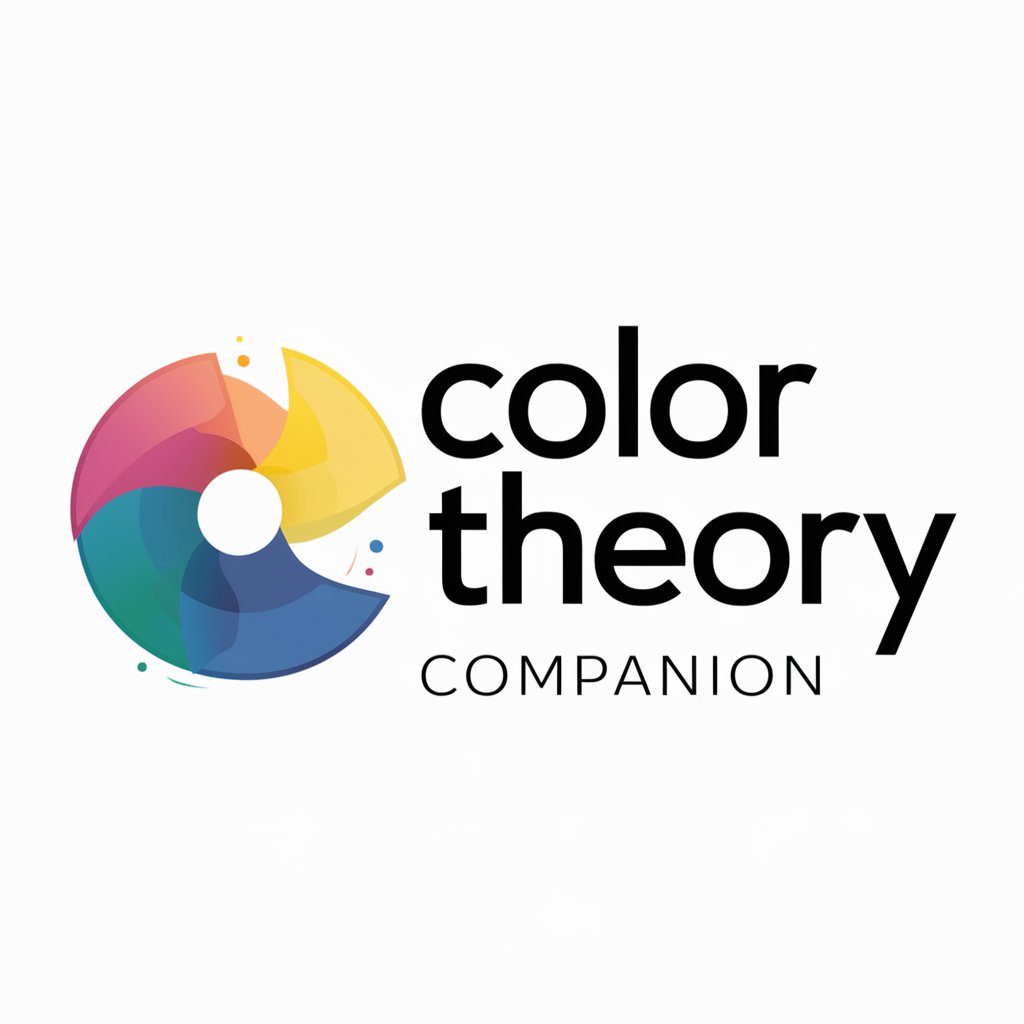
Welcome to Color Theory Companion, your guide to mastering color!
AI-powered color design assistant
Suggest a color palette for a cozy and inviting living room.
Explain the emotional impact of using blue in a design.
What are some current color trends in graphic design?
How can I create a complementary color scheme for a website?
Get Embed Code
Introduction to Color Theory Companion
Color Theory Companion is a specialized digital assistant designed to provide in-depth knowledge and guidance on color theory, a foundational aspect of art and design. It's crafted to assist artists, designers, and anyone involved in creating visual content, in making informed decisions about color usage. This tool educates users on the principles of color theory, including the color wheel, primary, secondary, and tertiary colors, complementary and analogous colors, and color harmonies. Additionally, it offers insights into the emotional and psychological effects of colors, suggesting color palettes based on themes, moods, or specific preferences. An example scenario might involve a graphic designer seeking to create a brand logo that conveys trust and professionalism. Color Theory Companion could suggest a palette based on blues and greys, known for their association with trustworthiness and formality, respectively. Powered by ChatGPT-4o。

Main Functions of Color Theory Companion
Color Education
Example
Explaining the significance of the color wheel and how to create color harmony in design projects.
Scenario
A beginner artist is unsure how to choose colors that complement each other for a painting. Color Theory Companion explains the concept of complementary colors using the color wheel, enabling the artist to select a visually appealing palette.
Palette Suggestions
Example
Providing customized color palettes for projects based on themes, moods, or specific color requests.
Scenario
An interior designer is looking for a soothing and warm color scheme for a client's meditation room. Color Theory Companion suggests a palette of soft greens, earthy browns, and muted golds to evoke a sense of calm and connection to nature.
Color Psychology
Example
Educating users on how different colors can affect mood and perception in various contexts.
Scenario
A marketing professional wants to understand which colors should be used for a health food brand to communicate freshness and vitality. Color Theory Companion recommends greens and yellows, colors often associated with health and energy.
Trend Awareness
Example
Keeping users updated on the latest color trends in design, fashion, and more.
Scenario
A fashion designer is preparing for the upcoming season and wants to incorporate the latest color trends into their collection. Color Theory Companion provides insights into the trending colors and how they can be applied to the designer's work.
Ideal Users of Color Theory Companion Services
Visual Artists and Illustrators
These creatives often experiment with color to express emotions, tell stories, or create visually striking work. Understanding color theory can enhance their ability to make impactful choices in their artwork.
Graphic and Web Designers
For these professionals, effective use of color is crucial in creating engaging designs and user experiences. Knowledge of color harmony and psychology can significantly improve the aesthetics and functionality of their designs.
Interior Designers
The choice of color in interior design affects the ambiance of a space and the wellbeing of its inhabitants. Color Theory Companion can assist in selecting appropriate color schemes that align with the desired mood and style of a space.
Fashion Designers
Fashion designers need to stay ahead of color trends and understand the emotional impact of colors to create appealing collections. Color Theory Companion can provide guidance on combining colors and leveraging the latest trends.
Marketers and Brand Managers
These professionals use color strategically to influence consumer behavior and perception. Insights into color psychology and trends can help in developing effective branding and marketing strategies.

How to Use Color Theory Companion
Start Your Journey
Access a comprehensive guide to color theory at yeschat.ai for a free trial without the need to sign up for ChatGPT Plus.
Define Your Needs
Identify your project's requirements, whether it's for digital art, interior design, fashion, or any other field that involves color decision-making.
Explore Color Theory
Utilize the Color Theory Companion to learn about color harmonies, the color wheel, and the psychological effects of colors to inform your choices.
Generate Palettes
Request specific color palettes based on themes, moods, or your project's unique needs for personalized suggestions.
Apply and Adapt
Apply the suggested color schemes to your project and use the tool's feedback to refine your choices for optimal results.
Try other advanced and practical GPTs
Summarize!
AI-powered, concise text summarization

Relay Protection Tutor
Streamlining Relay Protection Engineering

Travel Maestro
Navigate cities like a local, powered by AI

Diesel Generator
Powering Your Needs with AI

Compliance Buddy
Navigating Compliance with AI Precision

WCAG-GPT
Empowering Web Accessibility Through AI

Family Gift Guru
AI-powered personalized gift assistant

Visionary Scribe
Bringing Text to Visual Life
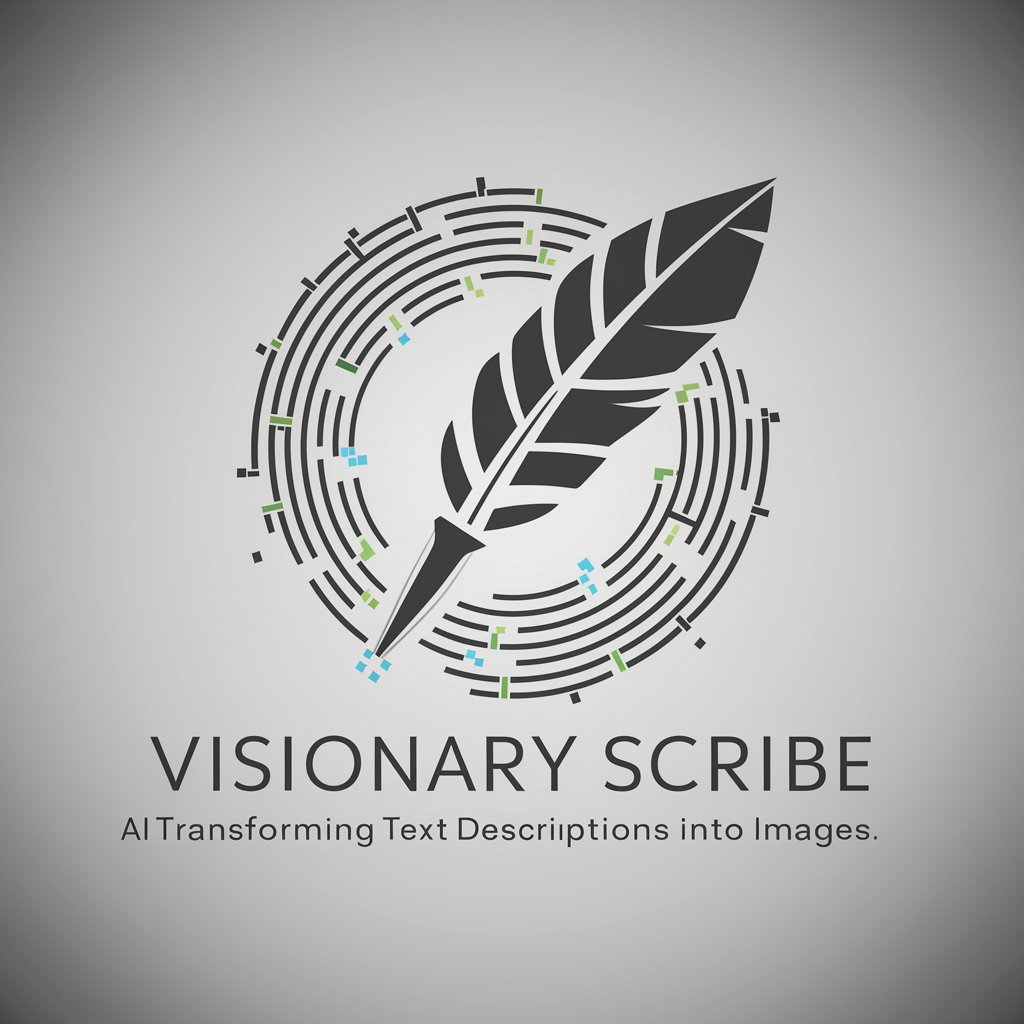
Interpretive Rules Advisor
Navigating Air Regulations with AI

JEE Mains Info GPT
AI-powered JEE Mains Navigator

Vidwan.ai - Startup Assistant
Empowering Startups with AI-Powered Solutions

Keywords Everywhere
Unlock SEO Potential with AI-Powered Insights

Color Theory Companion Q&A
What is Color Theory Companion?
Color Theory Companion is an AI-powered tool designed to educate users about color theory, offering guidance on color combinations, and suggesting color palettes based on specific themes or moods. It's tailored for artists, designers, and anyone involved in making color-related decisions.
How can Color Theory Companion assist in interior design?
For interior design, it can suggest color schemes that match the intended ambiance of a room, advise on color harmony, and provide insights into how different colors can affect space perception and mood.
Can I use Color Theory Companion to find trending colors?
Yes, it incorporates the latest color trends across various design fields, helping users stay updated and incorporate contemporary colors into their projects.
How does the tool address color psychology?
It educates users on the emotional and psychological impacts of different colors, aiding in the selection of colors that evoke desired responses for their projects.
Is Color Theory Companion suitable for beginners?
Absolutely, it's designed to be accessible to users of all skill levels, providing easy-to-understand explanations of color theory concepts and practical advice for applying them.
